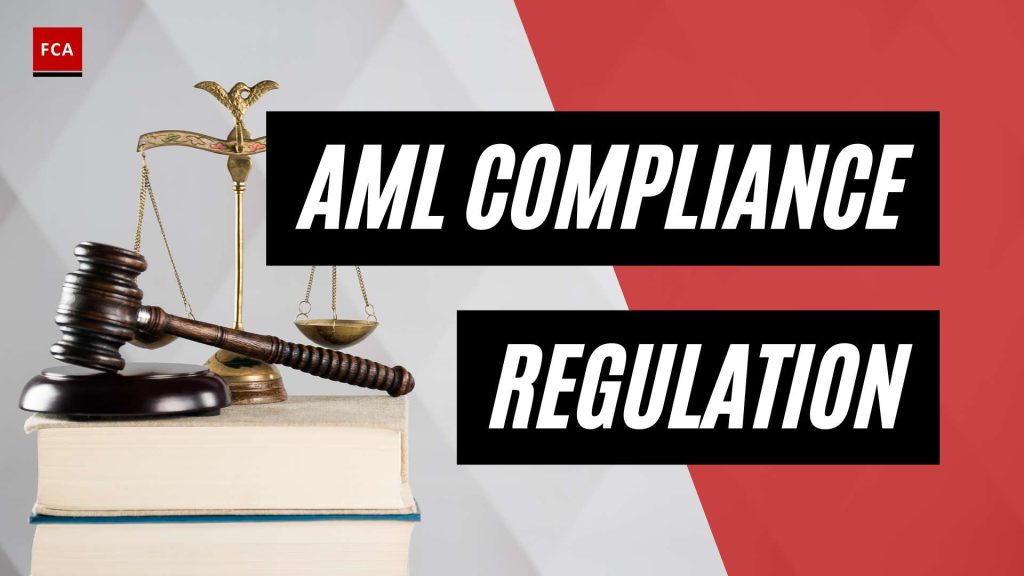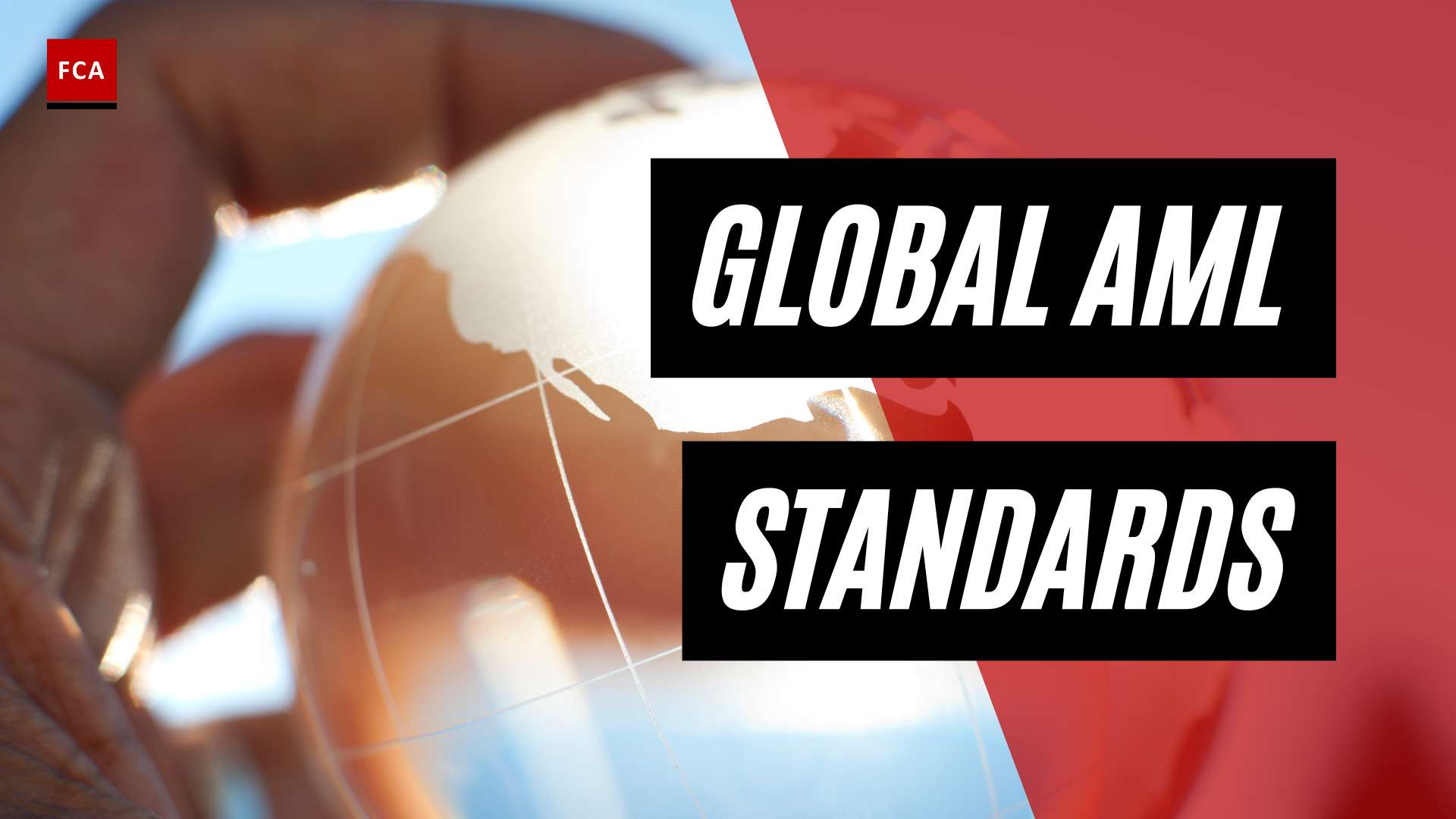Understanding AML Compliance Regulations
To combat financial crimes such as money laundering and terrorist financing, financial institutions must develop and implement effective Anti-Money Laundering (AML) compliance programs. These programs are crucial for ensuring the integrity of the financial system and demonstrating compliance with regulatory bodies worldwide. Failure to comply with AML regulations can have significant consequences for both institutions and individuals involved.
Importance of AML Compliance
The importance of AML compliance cannot be overstated. A well-implemented AML compliance program enables financial institutions to quickly detect and report suspicious money-laundering activities, tax evasion, fraud, and terrorist financing. By focusing on customer risks, implementing internal practices for detecting and reporting financial crimes, and fostering a compliance culture at all organizational levels, institutions can effectively prevent and combat these illicit activities.
AML compliance programs are designed to protect the financial system’s integrity, maintain trust among clients and investors, and prevent reputational damage. By adhering to AML regulations, financial institutions contribute to the global fight against financial crimes, ensuring that the proceeds of illicit activities do not enter the mainstream economy.
Consequences of Non-Compliance
Non-compliance with AML regulations can result in severe consequences for financial institutions. Regulatory bodies and authorities impose significant fines and penalties on institutions that fail to meet AML obligations. These fines can amount to hundreds of millions of dollars for major institutions, impacting their financial stability and profitability.
Furthermore, non-compliance can have far-reaching reputational consequences. Institutions that fail to abide by AML regulations risk losing the trust of their clients, investors, and regulatory bodies. The damage to an institution’s reputation can be long-lasting and difficult to repair. Rebuilding trust and credibility may require significant efforts and resources.
To illustrate the serious repercussions of non-compliance, let’s consider the example of JPMorgan, a prominent U.S. investment bank. In 2021, JPMorgan was fined $614 million due to AML compliance violations. This substantial penalty serves as a reminder of the importance of robust AML compliance programs and the severe consequences that can result from non-compliance.
Financial institutions must prioritize AML compliance to protect themselves, their clients, and the integrity of the global financial system. By implementing comprehensive AML compliance programs, conducting regular audits, and providing ongoing training to employees, institutions can mitigate the risks associated with non-compliance and maintain a strong stance against financial crimes.
Next, let’s explore the key components of an effective AML compliance program, including customer risk assessment, detection of suspicious activities, comprehensive policies and procedures, Know Your Customer (KYC) programs, independent audits, and ongoing AML training.
Key Components of an AML Compliance Program
To effectively combat financial crimes and ensure compliance with regulatory bodies worldwide, financial institutions must develop and implement Anti-Money Laundering (AML) compliance programs. These programs are crucial for preventing and detecting money laundering, terrorist financing, fraud, and other illicit activities. Let’s explore the key components of an AML compliance program that helps institutions adhere to AML regulations and protect against financial fraud effectively.
Customer Risk Assessment
A fundamental component of an AML compliance program is conducting a thorough customer risk assessment. Financial institutions must assess the risk associated with each customer to identify and mitigate potential vulnerabilities. This process involves gathering relevant data, evaluating transaction patterns, assessing geographic locations, and monitoring high-risk individuals. By understanding customer risks, institutions can tailor their due diligence efforts and implement appropriate controls to prevent money laundering and other financial crimes.
Detection of Suspicious Activities
An essential aspect of an AML compliance program is the detection and reporting of suspicious activities. Financial institutions should establish robust internal practices and systems to monitor transactions and identify any potential signs of money laundering or other illicit activities. Implementing advanced AML compliance software can enhance the effectiveness of these systems by leveraging technology to analyze large volumes of data and identify suspicious patterns or anomalies.
Comprehensive Policies and Procedures
Comprehensive policies and procedures are vital for guiding employees in adhering to AML regulations and internal controls. These policies should outline the institution’s commitment to AML compliance, provide guidance on customer due diligence, transaction monitoring, and reporting suspicious activities. By establishing clear policies and procedures, financial institutions can ensure consistent and standardized practices across the organization.
Know Your Customer (KYC) Programs
Know Your Customer (KYC) programs play a crucial role in AML compliance. These programs require financial institutions to verify the identity of their customers and understand the nature of the business relationship. KYC procedures typically involve collecting identifying information, conducting risk assessments, and periodically updating customer information. By implementing robust KYC programs, institutions can effectively identify and mitigate the risk of money laundering and other financial crimes.
Independent Audits and Continuous Monitoring
Regular independent audits and continuous monitoring are essential components of an AML compliance program. Independent audits help evaluate the effectiveness of the program, identify potential weaknesses, and ensure compliance with regulatory requirements. Continuous monitoring involves ongoing surveillance of customer transactions, detecting suspicious activities, and promptly reporting them to the appropriate authorities. By conducting audits and continuous monitoring, financial institutions can identify gaps, make necessary improvements, and enhance the overall effectiveness of their AML compliance efforts.
Ongoing AML Training
Providing ongoing AML training to employees is critical for maintaining a strong culture of compliance within financial institutions. Training should cover AML regulations, internal policies and procedures, customer due diligence, and the detection and reporting of suspicious activities. By regularly educating employees, institutions can foster a deep understanding of AML requirements and empower their staff to play an active role in identifying and preventing financial crimes.
By incorporating these key components into their AML compliance programs, financial institutions can create a robust framework to mitigate the risks associated with money laundering, terrorist financing, and other illicit activities. It is essential to stay updated with evolving AML compliance requirements, implement effective controls, and leverage technology and training to adapt to changes in the regulatory landscape. This proactive approach ensures compliance, protects institutions from the consequences of non-compliance, and contributes to the global fight against financial crimes.
International AML Standards
When it comes to Anti-Money Laundering (AML) compliance, various international standards play a crucial role in shaping regulations and guiding financial institutions and businesses in their efforts to combat money laundering and terrorist financing. Let’s explore some of the key international AML standards.
Financial Action Task Force (FATF) Recommendations
The Financial Action Task Force (FATF) is a global standard-setting body for AML and counter-terrorist financing (CTF) regulations. Although its recommendations are not legally binding, most countries implement them into their national laws to strengthen their AML frameworks. The FATF provides a comprehensive set of recommendations covering areas such as customer due diligence, suspicious transaction reporting, and international cooperation. For further information, refer to the FATF recommendations.
Bank Secrecy Act (BSA) in the United States
In the United States, the Bank Secrecy Act (BSA) and its implementing regulations form the core of AML compliance regulations. The BSA requires financial institutions to establish and maintain programs that detect and prevent money laundering. It also established the Financial Crimes Enforcement Network (FinCEN) as the regulatory authority overseeing these compliance efforts. To learn more about AML compliance in the United States, visit our article on the Bank Secrecy Act.
Anti-Money Laundering Directives in the European Union
The European Union has implemented multiple directives to combat money laundering and terrorist financing. The 6th Anti-Money Laundering Directive (AMLD6) is the latest addition to the AML regulatory framework within the EU. AMLD6 introduces measures to enhance the existing AML framework, including increased transparency of beneficial ownership, enhanced due diligence requirements, and improved access to beneficial ownership registers for authorities. To delve deeper into AML compliance regulations in the European Union, refer to our article on EU AML Directives.
AML Compliance Regulations in Hong Kong
In Hong Kong, AML compliance regulations are governed by the Anti-Money Laundering and Counter-Terrorist Financing Ordinance (AMLO). This ordinance requires banks, financial institutions, and designated non-financial businesses and professions to adhere to AML and CTF regulations. The Financial Services and Treasury Bureau (FSTB) serves as the regulatory authority responsible for overseeing AML efforts in Hong Kong. For more information on AML compliance in Hong Kong, consult our article on AML Compliance Regulations.
AML/CTF Act in Australia
Australia’s AML compliance regulations are outlined in the Anti-Money Laundering and Counter-Terrorism Financing Act 2006 (AML/CTF Act). This act imposes obligations on reporting entities, including financial institutions and casinos, to comply with customer due diligence and transaction monitoring requirements. The aim is to prevent money laundering and terrorism financing within the country. To learn more about AML compliance in Australia, visit our article on the AML/CTF Act.
By understanding these international AML standards, financial institutions and businesses can ensure they have robust compliance programs in place that align with global best practices. Staying up to date with these standards is vital to effectively combat money laundering and terrorist financing, and to maintain a strong AML framework.
Evolving AML Compliance Landscape
As the global financial landscape continues to evolve, so do the regulations surrounding Anti-Money Laundering (AML) compliance. Staying abreast of the trends and changes in AML compliance regulations is crucial for financial institutions and professionals working in compliance, risk management, anti-money laundering, and anti-financial crime. In this section, we will explore the trends in AML compliance regulations, the role of regulatory bodies, and the importance of adapting to changes in AML regulations.
Trends in AML Compliance Regulations
In recent years, there has been an increasing scrutiny and enforcement of AML regulations globally. Regulatory bodies worldwide are tightening their grip on financial institutions’ compliance practices, making it crucial for organizations to stay updated and adhere to these regulations to avoid severe repercussions (Financial Crime Academy). A key trend is the escalation in AML fines, with penalties increasing by 50% in recent times (LexisNexis). Alleged breaches of AML regulations are resulting in larger fines being imposed on companies by global regulators (LexisNexis). These trends highlight the importance of prioritizing compliance with AML regulations to avoid penalties and reputational damage.
The Role of Regulatory Bodies
Regulatory bodies play a critical role in establishing and enforcing AML compliance regulations. They set the standards and guidelines that financial institutions must adhere to in order to prevent money laundering and terrorist financing. Some prominent regulatory bodies include the Financial Action Task Force (FATF), the Bank Secrecy Act (BSA) in the United States, the Anti-Money Laundering Directives in the European Union, and AML Compliance Regulations in Hong Kong and Australia.
The Financial Action Task Force (FATF) is an intergovernmental organization that sets global standards and recommendations for AML and counter-terrorism financing measures. Its recommendations serve as a benchmark for countries worldwide to develop their AML frameworks (fatf recommendations). Regulators such as the Financial Crimes Enforcement Network (FinCEN) in the United States and the Financial Conduct Authority (FCA) in the United Kingdom work closely with financial institutions to ensure compliance with AML regulations.
Adapting to Changes in AML Regulations
AML compliance regulations are constantly evolving, and financial institutions are expected to adapt to these changes promptly to ensure that their AML programs remain effective and compliant with the latest regulatory requirements. It is essential to establish a robust AML compliance program that can be adjusted and enhanced as per the evolving landscape.
To adapt to changes in AML regulations, financial institutions should prioritize the following:
- Regular Updates: Stay informed about the latest AML regulations and guidance issued by regulatory bodies.
- Risk Assessments: Conduct regular risk assessments to identify and mitigate potential money laundering and terrorist financing risks.
- Compliance Policies and Controls: Develop comprehensive AML policies and controls that align with regulatory requirements.
- Compliance Officer and Resources: Appoint a dedicated Compliance Officer and allocate sufficient resources to ensure effective AML compliance.
- Training and Ongoing Monitoring: Provide regular AML training to employees and implement ongoing monitoring programs to detect and report suspicious activities.
- Independent Audits and Reviews: Conduct periodic independent audits and reviews of the AML program to identify any gaps or deficiencies and make necessary improvements.
By adapting to changes in AML regulations, financial institutions can maintain compliance and mitigate the risks associated with money laundering and terrorist financing. It is essential to leverage technology solutions such as AML compliance software and AML compliance solutions to streamline compliance processes and enhance effectiveness in meeting regulatory requirements.
In conclusion, the AML compliance landscape is continually evolving, and financial institutions must stay informed, adapt, and establish effective compliance programs to ensure compliance with the latest AML regulations. By prioritizing AML compliance, organizations can safeguard their operations, maintain the integrity of the financial system, and contribute to the global fight against money laundering and terrorist financing.
Building an Effective AML Compliance Program
To establish an effective AML compliance program, organizations must adhere to a set of best practices and key components. These components include adopting a risk-based approach, implementing comprehensive policies and controls, appointing a compliance officer, providing training and ongoing monitoring, and conducting independent audits and reviews.
Risk-Based Approach
A risk-based approach is crucial for designing an AML compliance program that is tailored to the specific needs and risks of an organization. This approach involves conducting a thorough assessment of the organization’s business activities, customer base, and exposure to money laundering risks. By identifying and prioritizing these risks, organizations can allocate resources and implement controls in a targeted manner. Regular risk assessments should be conducted to ensure that the program remains effective and aligned with evolving risks (Financial Crime Academy).
Compliance Policies and Controls
Comprehensive AML compliance policies and controls are the backbone of an effective program. These policies should outline the organization’s commitment to AML compliance, provide guidance on procedures and processes, and ensure adherence to applicable regulations. Controls should be implemented to mitigate identified risks and monitor ongoing compliance. This includes implementing transaction monitoring systems, customer due diligence procedures, and suspicious activity reporting mechanisms. Organizations should regularly review and update their policies and controls to reflect changes in regulations and emerging risks (Unit21).
Compliance Officer and Resources
Appointing a dedicated compliance officer is essential for the successful implementation of an AML compliance program. The compliance officer should have the necessary expertise and authority to oversee and enforce the program. Adequate resources, both human and technological, should be allocated to support the compliance function. This includes investing in AML compliance software and solutions that enable efficient and effective monitoring, reporting, and analysis (Unit21).
Training and Ongoing Monitoring
Ongoing training is crucial to ensure that employees understand their responsibilities and are equipped with the knowledge and skills necessary to detect and prevent money laundering activities. AML compliance training should cover topics such as recognizing red flags, conducting customer due diligence, and reporting suspicious activities. Training programs should be tailored to the specific needs of different roles within the organization and should be regularly updated to reflect changes in regulations and emerging trends. Ongoing monitoring should also be conducted to identify and address any compliance gaps or issues and to ensure that controls are operating effectively (Unit21).
Independent Audits and Reviews
Regular independent audits and reviews are essential to assess the effectiveness of an organization’s AML compliance program and to identify areas for improvement. These audits should be conducted by internal or external parties who are independent from the compliance function. Audits and reviews should cover all aspects of the program, including policies and procedures, controls, training, and reporting mechanisms. The findings and recommendations from these audits should be used to enhance the program and address any deficiencies or weaknesses (Unit21).
By incorporating these key components into their AML compliance programs, organizations can establish a robust framework to detect and prevent money laundering activities. It is important to note that AML compliance requirements may vary depending on the jurisdiction and industry. Organizations should stay informed about the latest regulatory developments and adjust their programs accordingly to ensure ongoing compliance.









